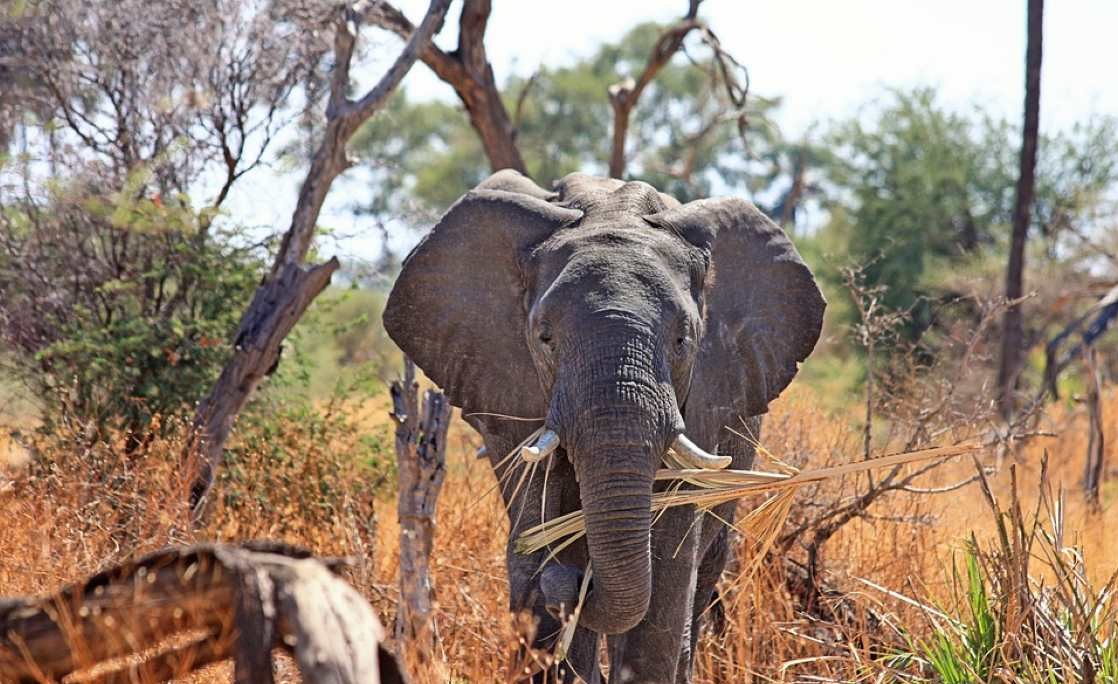
Elephant Foraging and Human–Elephant Conflict
When you’re craving your favorite food, a substitute rarely does the trick. You might be surprised to learn that elephants feel the same way.
A recent study uncovered that African elephants, who are coming into increased contact with humans, are aware of where their favorite foods grow. They tend to seek out these areas throughout the year using the shortest path possible. And thanks to this research, we can now track elephant paths in greater detail.
Elephants and food
Elephants play a vital role in ecosystem engineering by modifying vegetation structure, regulating plant communities and aiding in seed dispersal. Their movement and foraging habits are key to biodiversity, as is the case with many large herbivorous animals.
Due in part to their size, elephants require around 150 kg of food per day. The sheer volume means they can spend around three-quarters of their day eating. So, elephants require plenty of food in their surrounding areas. This is especially true for matriarch elephant groups given that they have access to a smaller foraging area.
Elephant foraging and crop raids
In their study, Gloria Mugo, Lydia Tiller, and Lucy King aimed to map elephant movement in Sagalla, Kenya, to help manage human–elephant conflict (HEC). HEC occurs due to the increased proximity of elephants and humans. Increasing human activity, including farming, road-building, and deforestation, has led to this increased proximity. This means that there’s a higher likelihood of conflict over resources like food.
In particular, elephant crop raiding is becoming increasingly difficult to manage. Researchers have been looking for a way to manage elephant crop raiding to protect both humans and elephants. Because elephants have a keen sense of smell, their olfactory senses may be key to deterring crop raids.
A different study conducted in Uganda and Kenya found that using a ‘smelly elephant repellent’ helped curb the number of crop raids by elephants and other animals. The repellent was developed locally with supervision from teams of non-governmental organizations (NGOs), including Save the Elephants.
The repellent is an organic mix that includes chili, which was found to have a positive effect. For example, during the study period, the repellent helped deter 82% and 63% of crop raids in Uganda and Kenya, respectively.
As the chances of human–elephant conflict increase, with elephants roaming further from their diminishing habitats, we need to continue to find ways to better manage increasing interactions with elephants.
Managing human–elephant conflict
There are now two distinct categories of African elephants, following a revision of their taxonomy in 2021. The first is the African forest elephant, known for its smaller size and recently classified by the International Union for the Conservation of Nature (IUCN) as critically endangered; the second is the African savannah elephant, listed as vulnerable.
HEC is a large contributor to the reduced numbers of both species of African elephants. They’ve suffered respective declines of 86% and 60% over the last 31 and 50 years. By understanding why elephants choose certain paths, we can identify effective methods to better conserve their habitats and recover their populations.
The research of Mugo, Tiller, and King looks at how innovative technologies can be used to help manage HEC. The area under study, Sagalla, is situated between two key national parks, the Tsavo East and West national parks. This places the community in the path of almost 15,000 elephants. Because Sagalla has recently experienced increased elephant crop raids and damage to water tanks, the community has directed resources towards mitigating HEC.
Tracking elephant movement
HEC incidents are increasingly observed in countries in South Asia too, like Sri Lanka and India. So, technologies that can help us to determine how and why elephants move in the way they do are more important than ever.
Mugo, Tiller, and King use Sentinel 2, the European Space Agency’s high-resolution open-source Earth observation satellite, to track vegetation hotspots for elephants. They look for any associations between movement and the density and frequency of vegetation. Although previous methods of elephant tracking include reports and updates at 1 hr intervals, these images help us to continuously track elephant movement patterns. They’re extremely useful for the accurate mapping of choices made by elephants when on the move.
The authors used this technology to retrace the steps of the African bull elephants in particular. Bull elephants prefer Combretum and Cissus. Young calves and mothers tend to opt for Commiphora and Terminalia. When travelling together, family groups will seek out areas where these species grow close to one another, showing cognizance of locations for food collection.
Human–elephant coexistence
This new knowledge, partnered with effective conservation efforts, will help to address human–elephant conflict and create new methods for human–elephant co-existence. Have a look at our Special Issue titled “Elephants: Moving from Conflict to Coexistence with People” for more information on human–elephant-related issues.
A second Special Issue, “Elephants: Moving from Conflict to Coexistence with People II” is now open for submissions if you’re thinking of contributing to this field of research.










